Sharp Stabbing Pain On Right Side After C-Section
C-section or cesarean section is a surgical procedure that involves delivering a baby through a surgical incision in the mother’s abdomen and uterus. It is a common procedure used when vaginal delivery is not possible or is risky. However, many women who have undergone a c-section experience a sharp, stabbing pain on their right side after the surgery. This pain can be a result of various factors and can significantly affect their recovery and quality of life. In this article, we will explore the causes, symptoms, and treatment options for sharp stabbing pain on the right side after a c-section.
Many women who have a c-section experience sharp, stabbing pain on the right side of their abdomen. This is a common symptom, often caused by gas or other waste products that accumulate in the abdominal cavity after surgery.
In some cases, the pain may be due to an infection or other complication following surgery. Contact your doctor for advice and treatment if you are experiencing sharp pain on your right side after a c-section. There are many effective treatments available that can help relieve your pain and improve your recovery. Sharp stabbing pain on the right side after c-section. After a c-section, some women experience pain on the right side.
Choosing to have a C-section to give birth to your baby is a necessity, owing to several risks. Whatever the cause behind having a C-section, it isn’t something that anyone would want to undertake. Recovery from a C-section is usually slower than a vaginal birth and often results in pain on the right side.
There are many reasons why you may experience pain on the right side after a c-section. One of the most common reasons is that your intestines were moved during the surgery. This can cause pain and discomfort, as well as bloating and gas. You may also find it challenging to move around or take deep breaths due to the pain. In some cases, you may also have a fever.
Another reason for pain on the right side after a c-section is an infection. This is usually treated with antibiotics, but surgery may be necessary to remove the infected tissue in some cases.
Finally, you may also experience pain on the right side after a c-section due to a blood clot. This can be dangerous and should be treated immediately. If you experience any discomfort, swelling, or redness in your leg, contact your doctor.
Recovery from a c-section takes time, so give yourself ample time to rest and heal. Drink plenty of fluids and eat healthy foods to help your body recover. Avoid lifting heavy objects or exercising until your doctor gives you the green light.
You’re not alone if you’re dealing with nerve pain after a c-section. Many women experience this type of pain, which can range from mild to severe. A few things can cause nerve pain after a c-section, including damage to the nerves during surgery, scar tissue formation, and inflammation.
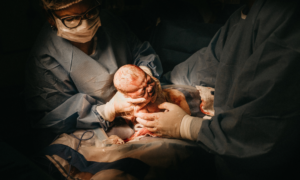
Causes of Pricking Pain after C-Section?
While c-sections are usually safe and effective, they can cause some side effects, including pain and discomfort. There can be various reasons behind the pricking pain experienced by some women after a c-section. Some of the possible causes could include:
Nerve Pain – Nerve pain after c section is a common problem that can occur after surgery. This type of pain can be difficult to treat and can cause a lot of discomfort for the patient. Several things can contribute to nerve pain after the c section, including damage to the nerves during surgery, inflammation or swelling around the nerve.
Hematoma – A hematoma is a collection of blood that pools under the skin. This can cause pain and inflammation.
Infection – An infection can occur at the site of surgery, causing pain and inflammation.
Adhesion – Adhesions are bands of scar tissue that can form between organs or tissues after surgery. This can cause pain and inflammation.
Retained Surgical Instruments – Retained surgical instruments are pieces of equipment that are accidentally left inside the patient’s body after surgery. This can cause pain and inflammation.
Seroma – A seroma is a collection of fluid that accumulates under the skin after surgery. This can cause pain and inflammation.
Haemorrhoids: If you have hemorrhoids, they can cause much pain and discomfort. This is especially true if you have just had surgery.
Constipation: If you are constipated, it can put a lot of pressure on your rectum and cause pain. This is also true after a c-section.
Gas: When you pass gas, it can cause a prickling sensation in your rectum. This is because the gas bubbles pass through.
If you are experiencing pricking pain after your c-section, it is important to consult with your doctor to determine the cause and receive appropriate treatment.
Types Of Nerve Pain In C-section
Pudendal Nerve Entrapment: The most common is called pudendal nerve entrapment, which affects the nerve that runs from the spine to the legs and feet. This can cause pain in the vulva, perineum, buttocks, and thighs.
Pelvic Floor Dysfunction: Another type of nerve pain, called pelvic floor dysfunction, can also occur after a c-section. This is when the muscles and tissues in the pelvis become weak or damaged, leading to pain in the lower abdomen and pelvis.
Sciatica: Sacral nerve root irritation or sciatica can also cause pain after a c-section. This is when the nerve that runs from the lower back to the legs becomes irritated, which can cause pain in the lower back, buttocks, and legs.
PONP: Postoperative Nerve Pain or PONP. The stretching and trauma cause this type of nerve pain to the nerves during the surgery. It can be quite severe and last for several weeks or even months.
Neuroma: This is a type of nerve tumor that can develop after surgery. It is usually benign (non-cancerous) but can be very painful.
Nerve entrapment occurs when the nerves become trapped or compressed by scar tissue. This can cause severe pain and may require surgery to release the nerve.
Neuralgia: This is a type of nerve pain caused by damage to the nerve. It can be harrowing and can last for weeks or even months.
Sensory nerve pain: This type of nerve pain is caused by damage to the nerves that send signals from the skin to the brain. This can cause burning, tingling, or shooting pain in the affected area.
Motor Nerve Pain: This nerve pain is caused by damage to the nerves that control muscle movement. This can cause weakness, paralysis, or cramping in the affected muscles.
Autonomic Nerve Pain: This nerve pain is caused by damage to the nerves that control automatic functions like blood pressure and heart rate. This can cause problems with sweating, urination, and digestion.
Mixed Nerve Pain: This type of nerve pain is caused by damage to more than one type of nerve. This can cause a combination of the symptoms above.
Nerve pain after a c-section can be extremely debilitating. If you are experiencing any nerve pain, it is essential to talk to your doctor so that they can determine the best course of treatment. There are many different treatments available for nerve pain, and the right one for you will depend on the type and severity of your pain.
Postpartum Hemorrhage Nursing Diagnosis-Risks-Care Plan-Management
Afterpains
Afterpains after c section causes are usually very common. Most women experience pain, cramping, or discomfort after giving birth. This is especially true after a c-section delivery.
There are several reasons why you might experience afterpains after a c-section. One reason is that your uterus is trying to get back to its original size and shape. The muscles in your uterus have been stretched during labor and delivery, so they will take some time to return to their normal state.
Another reason for afterpains is the release of oxytocin. Oxytocin is a hormone that helps your uterus contract and bleed less during and after delivery. It can also cause cramping and discomfort.
You can help relieve the pain of afterpains by taking over-the-counter pain medication, such as ibuprofen or acetaminophen. You can also apply heat to your stomach or lower back. Some women find that massaging their uterus can help relieve the pain.
Most afterpains go away within a few days or weeks. However, if you are still experiencing pain after four weeks post-delivery, be sure to talk to your doctor. She may be able to prescribe medication to help ease the discomfort.
Afterpains after c section can be quite discomforting. Here are some tips to help you deal with them.
- Afterpains can last for several days after the surgery.
- Take pain medication as prescribed by your doctor.
- Use a heating pad on your stomach to help ease the pain.
- Get plenty of rest and drink plenty of fluids.
- Avoid strenuous activity for a few weeks after the surgery.
- If the pain persists or is severe, contact your doctor.
Constipation
Constipation after c section is a common problem that many women experience after having a c section. There are several reasons why this might happen, including the fact that the intestines have been moved during surgery and the use of pain medication after the operation. Constipation can cause a great deal of discomfort and is difficult to treat. Fortunately, there are several things that you can do to help relieve the problem.
One of the best ways to prevent constipation after the c section is to drink plenty of fluids. This will help keep your bowels moving smoothly. It would be best if you also ate plenty of fiber-rich foods, such as fruits, vegetables, and whole grains. If you have trouble going to the bathroom, you can try taking a laxative or drinking a glass of warm water with lemon juice before bed. Exercising regularly can also help to keep your bowels moving. If you continue to experience constipation after c section, be sure to speak to your doctor for help. They may be able to recommend medication or other treatment that will help relieve the problem.
Hematoma
Hematoma after c section is a common complication that can occur after a c section. A hematoma is a collection of blood outside of the blood vessels. Hematomas can cause swelling, pain, and difficulty moving. Hematomas after c section usually resolve on their own, but in some cases, they may require surgery to remove the blood clot. If you have any concerns about a hematoma after your c section, speak with your doctor.
There are many potential causes of hematoma after the c section. One of the most common causes is excessive bleeding. This can be caused by several factors, such as inadequate clotting or damage to the blood vessels. Another common cause of hematoma is infection. Infections can cause inflammation and subsequent bleeding. Finally, hematoma may also be caused by pressure on the wound from the surgical incision. This pressure can prevent the blood from flowing properly and accumulate blood under the skin. Any of these factors can lead to serious health complications.
Infection
Infection after c section is a common problem that can occur after surgery. There are several causes of infection after c section, including bacteria entering the wound and issues with the healing process. Infection after c section can cause several problems, including fever, pain, and swelling. In some cases, infection after the c section can be life-threatening. It is important to seek medical attention if you experience any signs or symptoms of infection after the c section. Treatment for infection after c section typically includes antibiotics and other medications to help fight the infection. Surgery may also be necessary in some cases. It is important to follow your doctor’s instructions carefully to ensure a speedy and safe recovery.
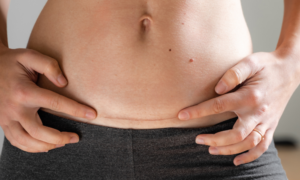
Adhesion
Adhesion after c section can be a common complication after the surgery. Adhesions are bands of scar tissue that can form between organs and tissues inside the abdomen. This can cause pain, inflammation, and other problems.
Adhesion is defined as the molecular force that holds together two surfaces. Adhesion can be caused by several factors, including electrostatic attraction, Van der Waals forces, and chemical bonding. Adhesion can also occur when two surfaces are forced together, as in the case of a surgical incision. Adhesion after surgery can cause several problems, including pain, inflammation, and scar tissue formation.
One of the most common causes of adhesion after surgery is surgical staples or sutures. The metal staples or stitches create sharp edges on the skin’s surface, which can cause irritation and inflammation. The staples or stitches can also cause scar tissue formation, which can adhere to the surrounding tissues. Adhesion can also be caused by the use of adhesive tapes or dressings. The adhesive can cause irritation and inflammation and can also cause the formation of scar tissue.
Adhesion can also be caused by the presence of bacteria or other foreign objects in the wound. Bacteria can cause inflammation and the formation of scar tissue. Foreign objects can also cause irritation and inflammation and can lead to the formation of adhesions.
Adhesion can be a difficult problem to treat. The best way to prevent adhesion is to use techniques that minimize the trauma to the surgical wound. Adhesive dressings should be avoided, and surgical staples or sutures should be removed as soon as possible. Irrigating the wound with saline can also help to reduce the risk of adhesion. If adhesion does occur, treatment may include the use of medications or physical therapy. Physical therapy can help to break up scar tissue and improve mobility.
There are different ways to reduce the risk of adhesion formation after the c section. Some measures include:
- Follow your doctor’s instructions carefully after surgery.
- Keeping your incision clean and dry.
- Take care not to pull on your stitches.
- Moving around as soon as you are able.
- Avoid strenuous activities for a few weeks after surgery.
Seromas
Seromas are a common complication after surgery. A seroma is a collection of fluid that builds up in the space between tissues and organs. This can occur after any surgery, but it is more common after procedures that involve tissue damage, such as a c-section. Seromas often cause pain and swelling. In some cases, they may need to be drained with a needle. Treatment for pain after c section due to seroma includes pain medications and cold compresses. If the seroma does not go away on its own, surgery may be necessary to remove it.
Haemorrhoids
Pain after c section is a common problem, but many people don’t realize that hemorrhoids can be a major contributor. Hemorrhoids are swollen veins in the rectum or anus, and they can cause pain, itching, and bleeding. If you have pain after the c section, it’s important to rule out hemorrhoids as a cause.
There are several things you can do to help prevent or treat hemorrhoids. One is to eat high-fiber foods, which will help keep your stools soft and easy to pass. You should also avoid sitting for long periods of time and try to get regular exercise. If you have hemorrhoids causing pain or bleeding, you may need to use a cream or ointment to help relieve the symptoms.
If you are having pain after the c section, it’s important to talk to your doctor about possible causes. Hemorrhoids can be a stubborn problem, but they can usually be treated successfully.
Constipation
Many women experience pain after a c section due to constipation. This is caused by the pain medications and the lack of activity post surgery. There are a few things you can do to help relieve the pain.
First, drink plenty of fluids. This will help keep you hydrated and move things through your system. Secondly, eat high fiber foods. This will help add bulk to your stool and make it easier to pass. Finally, exercise regularly. This will help get your blood flowing and speed up the healing process. If you follow these tips, you should start to feel better soon.
Gas
When you have a c-section, the pain you experience after surgery may be due to gas accumulating in the abdomen. This pain is usually worse when you move, or cough and can last for several days. Some simple steps can help to relieve the pain.
First, try to relax and take it easy. Get plenty of rest and drink plenty of fluids. Walking may also help to get the gas moving. You can gently massage your abdomen to help release the gas. And finally, if the pain is severe, ask your doctor about pain medication. With a little patience, the pain will gradually go away.
Pelvic Pain after C-section on the Right Side
Many different things can cause pelvic pain after a c-section on the right side. The most common causes are gas and bloating, constipation, and hernias. Other possible causes include infection, nerve damage, and blood clots. If you are experiencing pelvic pain after a c-section on the right side, it is important to seek medical attention to determine the cause and receive treatment. Pelvic pain can be very uncomfortable and may interfere with your daily activities. Treatment for pelvic pain will vary depending on the grounds but may include medication, surgery, or physical therapy. It is important to seek medical help if you are experiencing pelvic pain so that you can get the treatment you need and return to your normal activities as soon as possible.
The pelvic cavity is located below the abdominal cavity, and it contains the following organs:
- Reproductive organs
- Urinary bladder
- Distal ureters
- Proximal urethra
- Colon
- Rectum
- Anal canal
The womb grows in size throughout pregnancy, which impacts the bladder and urethra. You may have heard about frequently urinating during pregnancy. Do you know why that is? It’s because of the uterus pushing on the bladder and hormonal changes, among other things.
Overstretching of the muscles is one of the leading causes of pelvic pain. A stretching that has lasted for 9 months will not go away in a single day. However, it differs from woman to woman in terms of length.
Pelvic organ prolapse is another option. Pelvic floor muscle strength isn’t enough to support the organs in this condition. It causes discomfort and bulging in the pelvis and nerve damage that produces stabbing pain.
You’ve probably been wondering what to do about it. Is that the case, you may breathe! It isn’t as simple as it appears, though. Pain relief can be achieved through breathing exercises, but you’ll need to perform other activities to build muscle strength and get them working. Last but not least, pay attention to your body.
Symptoms of Sharp Stabbing Pain on Right Side
Sharp stabbing pain on the right side after a c-section is a common condition that affects many women. Women must understand the symptoms of this pain and seek medical help if necessary. Here is a list of symptoms that women should look out for:
- Sudden sharp pain: The most common symptom of the sharp stabbing on the right side after a c-section is a sudden, intense pain that can be described as a sharp, stabbing sensation. This pain can be severe and can last a few seconds to a few minutes.
- Pain that worsens with movement: Women who experience sharp stabbing pain on the right side after a c-section may notice that the pain worsens with movement, such as walking, bending, or twisting. This can make it difficult for women to perform their daily activities.
- Numbness or tingling: Some women may experience numbness or tingling in the affected area and sharp stabbing pain. This can be an indication of nerve damage and should be addressed immediately.
- Swelling: Swelling in the affected area can also occur with sharp stabbing pain. This can be due to inflammation or infection and should be treated promptly.
- Redness or warmth: The area around the sharp stabbing pain may also be red or warm to the touch, indicating inflammation or infection.
- Fatigue: Women who experience sharp stabbing pain on the right side after a c-section may also feel tired. The pain can disrupt their sleep and make it difficult to perform their daily activities.
Sharp stabbing pain on the right side after a c-section is a common condition that should be taken seriously. Women who experience these symptoms should seek medical help promptly to ensure proper treatment and prevent further complications.
Possible Treatments for Sharp Stabbing Pain on Right Side after c-section
- Pain Medication: Pain medication is one of the most common treatments for sharp, stabbing pain after a c-section. Over-the-counter pain relievers such as ibuprofen and acetaminophen can effectively reduce pain and inflammation. If the pain is severe, your doctor may prescribe stronger pain medication, such as opioids.
- Physical Therapy: Physical therapy can effectively treat sharp stabbing pain after a c-section. A physical therapist can help you strengthen the muscles in your abdominal wall, reduce scar tissue, and improve your posture. They may also teach you exercises to help relieve pain and improve mobility.
- Massage Therapy: Massage therapy can also be a helpful treatment for sharp stabbing pain after a c-section. A massage therapist can work on the affected area to help reduce pain and improve mobility. They may also help to break up scar tissue, which can cause sharp stabbing pain.
- Chiropractic Care: Chiropractic care can effectively treat sharp, stabbing pain after a c-section. A chiropractor can help realign the spine and improve posture, reducing pain and improving mobility. They may also use manual therapies to help relieve pain and improve flexibility.
- Surgery: In some cases, surgery may be necessary to treat sharp stabbing pain after a c-section. Your doctor may recommend surgery to remove adhesions or scar tissue or to repair nerve damage.
Sharp stabbing pain after a c-section can be frustrating and debilitating. However, several effective treatments are available, including pain medication, physical therapy, massage therapy, chiropractic care, and surgery. If you are experiencing sharp stabbing pain after a c-section, you must talk to your doctor about the best treatment options for your specific needs.
Prevention of Stabbing Pain on Right Side after c-section
C-section, also known as cesarean delivery, is a surgical procedure in which a baby is delivered through an incision in the mother’s abdomen. Although this procedure has many benefits, it can also lead to some postoperative pain and discomfort, including stabbing pain on the right Side. Here are a few ways to prevent this painful experience.
- Get enough rest: After a c-section, it is essential to get enough rest to allow the body to recover properly. This will help reduce the risk of developing stabbing pain on the right Side.
- Exercise regularly: Exercise can help increase circulation, reduce swelling, and prevent scar tissue formation. This will reduce the risk of stabbing pain after a c-section.
- Wear supportive clothing: Wearing supportive clothing, such as a belly wrap or support band, can help alleviate pain and prevent scar tissue formation.
- Massage the incision site: Massaging the incision site can help reduce pain and improve circulation. It can also help prevent the formation of scar tissue.
- Avoid heavy lifting: Lifting heavy objects can put unnecessary stress on the incision site, leading to Stabbing pain on the right Side.
- Avoid sitting for long periods: Sitting for long periods of time can put pressure on the incision site and cause pain. Take breaks and stand up or walk around when possible.
- Eat a balanced diet: Eating a balanced diet rich in nutrients and vitamins can help the body heal and reduce the risk of stabbing pain after a c-section.
Taking steps to prevent stabbing pain on the right side after a c-section can help ensure a quick and comfortable recovery. If you experience any pain or discomfort, it is crucial to seek medical attention immediately. Your healthcare provider can provide personalized recommendations based on your specific needs and help you manage your postoperative pain.
Frequently Asked Questions FAQs
It’s been five weeks since your c-section, and you’re starting to feel pain again. What’s going on?
It’s not uncommon to experience pain after a c-section. Up to 60% of women report pain at the incision site six months after surgery. But if your pain is severe or comes on suddenly, it could signify a problem.
There are a few possible explanations for why you might feel pain after your c-section.
The first is that the pain is simply residual from the surgery. It can take weeks or even months for the incision to heal fully. If the pain is mild and manageable, it’s likely nothing to worry about.
Another possibility is that the pain is due to a buildup of scar tissue. Scar tissue can form around the incision and cause pain, especially if it’s pulling on the surrounding tissue. This can be treated with massage and physical therapy.
Finally, the pain could be a sign of an infection. If the pain is severe, comes on suddenly, or is accompanied by fever, chills, redness, or swelling at the incision site, you should call your doctor immediately.
You may be wondering about your scar if you’ve recently had a cesarean section (c-section). Will it fade over time? Will it always be visible? And what can you do to help it heal properly?
One common concern is c-section scar burning. This can happen when the scar is healing and is most likely due to the stitches that are used to close the incision. The good news is that this burning sensation is usually temporary and will go away as the scar heals.
A c-section scar burning can be a painful and uncomfortable experience for many women. The incision healing process often causes a burning sensation. This can result from the incision being sewn too tight, using dissolvable stitches, or even the body’s natural healing process. There are a few things that you can do to help ease the burning sensation and speed up the healing process.
Apply a cold compress: Applying a cold compress to the area can help to numb the pain and reduce inflammation. Do this for 10-15 minutes several times a day.
Take over-the-counter pain medication: If the pain is severe, you may want to take over-the-counter pain medication such as ibuprofen or acetaminophen.
Keep the area clean and dry: To prevent infection, it is essential to keep the area clean and dry. You may use a mild soap and water solution to clean the area. Be sure to pat the area dry afterward.
Apply a scar cream: There are many scar creams on the market that can help to reduce the appearance of scars. Be sure to read the instructions carefully before applying the cream.
Contact your doctor if the burning sensation is severe or lasts more than a few days. They may prescribe stronger pain medication or suggest other treatments.
With proper care, your c-section scar should heal within a few weeks. And over time, it will continue to fade and become less noticeable.
C-Section Incision Burning And Stinging Years Later
When you get a c-section, the doctor makes an incision through your skin and abdominal muscles to deliver your baby. This incision is usually about 6-8 inches long. After your baby is born, the doctor will close the incision with stitches or staples. The area around your incision may be sore for a few days after your surgery. You may also have some numbness, tingling, or burning in the area.
This is because the nerves in your abdomen are stretched during the surgery. The sensation should go away within a few weeks. However, some women experience burning and stinging sensations in their c-section incisions years after their surgery. This is called post-surgical neuralgia. It can be caused by damage to the nerves during surgery, scarring, or inflammation. Post-surgical neuralgia can be painful and debilitating. It can make it hard to care for your baby or do everyday activities. If you experience burning and stinging in your c-section incision, talk to your doctor. There are treatments that can help relieve your pain and improve your quality of life.
How To Treat Nerve Pain After C-Section
It is not uncommon for women to experience nerve pain after a cesarean section. This pain can range from mild to severe and last for a few days or weeks. There are a few things that you can do to help ease the pain and discomfort.
First, taking it easy and resting as much as possible is essential. Your body is going through many changes and needs time to heal. Avoid any strenuous activity or lifting anything heavy. If you must be active, do so slowly and carefully.
Second, you can try using over-the-counter pain medication to help ease the pain. Ibuprofen and acetaminophen are both effective in treating nerve pain. You may need to take prescription pain medication if the pain is severe.
Third, you can apply ice or heat to the area to help ease the pain. Using ice for 20 minutes at a time can help reduce inflammation and pain. Alternatively, you can apply heat for 15-20 minutes to help relax the muscles and ease the pain.
Fourth, you may need to see a physical therapist to help you with exercises that can stretch and strengthen the muscles around the area.
What causes sharp stabbing pain on the right side after a c-section?
A few possible causes of sharp, stabbing pain on the right side after a c-section. It could be due to the incision healing and the sensitive tissue around it. It could also be due to gas build-up in the intestines, which is common after surgery. In rare cases, it could signify a more severe complication, such as an infection or a blood clot. If you experience sharp pain after your c-section, mention it to your doctor or midwife so they can determine the cause and provide relief.
Is it normal to have sharp pain when coughing after a c-section?
Yes, it is normal to have sharp pain when coughing after a c-section. This is because the incision is still healing, and the tissue around it is sensitive. Coughing can also put pressure on the incision, which can cause pain. If the pain is severe, you can try coughing with a pillow over your incision to help protect it. It would be best to talk to your doctor or midwife about pain relief options.
Is this pain normal?
Yes, it is quite normal to experience sharp pains on the right side after a c-section. However, if the pain is severe or persists for more than a few days, it is important to consult your doctor to rule out any other possible causes.
When does this pain typically start?
The pain typically starts a few days after the c-section. It may come and go at first, but it is typically worse when you move around or put pressure on the right side of your abdomen.
Electric Shock Feeling In Vulva
If you’re experiencing electric shock-like sensations in your vulva, it’s likely due to pudendal neuralgia. This condition is caused by damage or compression of the pudendal nerve, which runs from the base of the spine to the genitals. Other conditions, such as vulvodynia or interstitial cystitis, can also cause electric shock sensations in the vulva. Treatment for pudendal neuralgia usually involves a combination of physical therapy, medications, and nerve blocks. If you’re experiencing electric shock sensations in your vulva, see a healthcare provider to get a proper diagnosis and treatment plan.
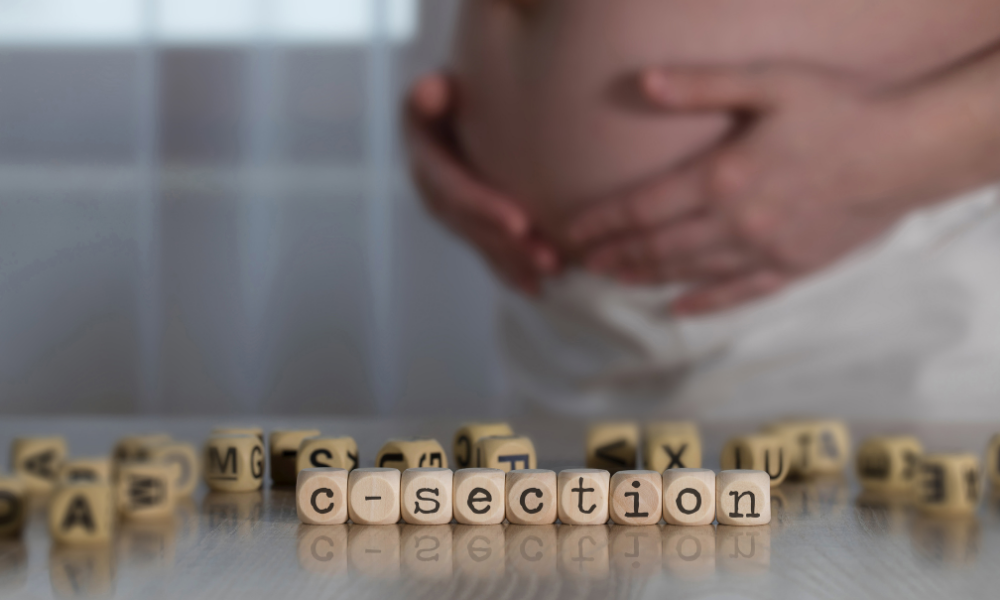
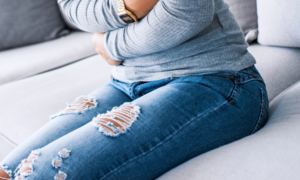

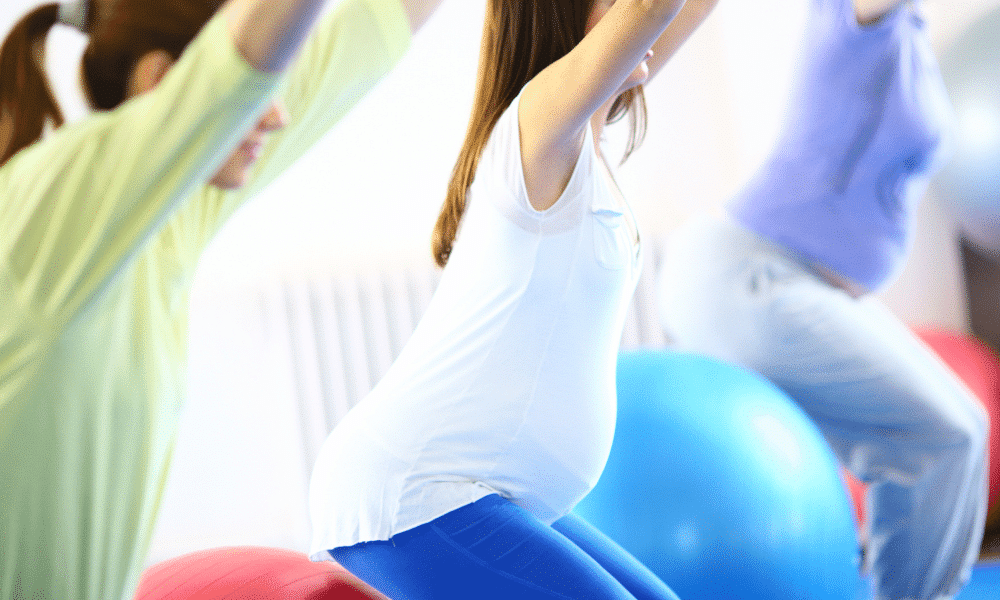
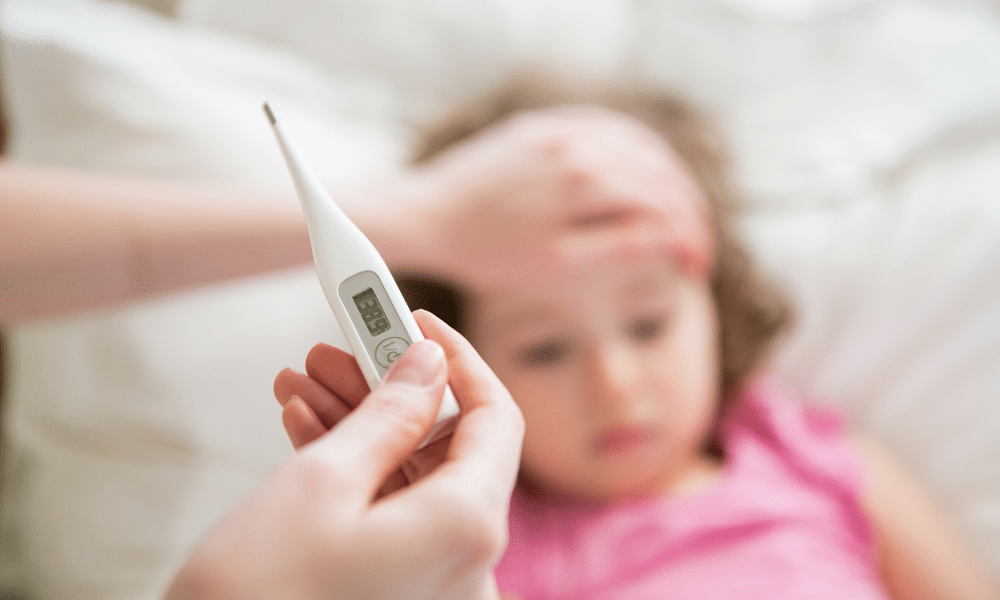
6 Replies to “Sharp Stabbing Pain On Right Side After C-Section”